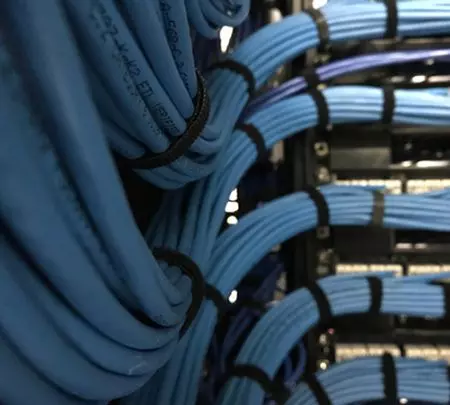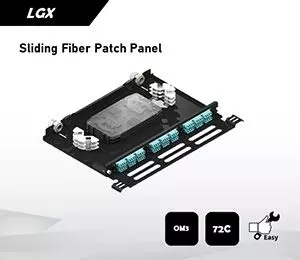A Guide to Standard American Wire Gauge of Network Cable
AWG, American wire gauge, is the common language to measure Network Lan Cable and patch cords. Each wire thickness is suited to different purposes. Thinner gauges usually find application in more lightweight applications, while thicker gauges are employed for heavy-duty applications. Then, how do we determine the wire thickness inside the cables?
Established in 1857, AWG originally measured basic solid wire, and now it is used to measure stranded wire as well. In the following guide, we provide an overview of what AWG is, why it is a key consideration, and the standard size available to help IT professionals select the right wire gauge for their application in Etherent cable and patch cables.

What is AWG?
American Wire Gauge (AWG) is a standard index for describing the diameter of the individual wires that make up a copper network cable. AWG helps users determine a wire's current-carrying ratings, the below chart will show you different ratings which gauges and performance is.

What’s the relationship between AWG and Wire Diameter?
Cable thickness is connected to the number of AWG. The important thing to remember is that the AWG and wire diameter relationship is reversed. For example, the smaller AWG number on cables, the stronger the wire outfits, and vice versa.
Copper Ethernet cables with a smaller gauge (larger diameter) are typically available in longer lengths because they allow signals to travel further and offer less resistance. Therefore, less resistance also generates less heat and cooperates with smaller gauge. For example, 24 AWG network cable will offer less resistance than a 26 AWG or 28 AWG network cable.
Slim Network Cables Are Used For?
In the network market, you may notice thin versions of Cat5e, Cat6 and Cat6a cables. Normally, 28 AWG cable with the thinner conductor is the best solution for high-density cabling system. But it might cause the limitation of transmission distance through networking. Therefore, choose wisely based on your actual data center application. Slim network cables are for space-saving and time-saving in high-density applications. Three advantages of choosing slimmer network cables:
1. Improved airflow in high-density racks and easier installation between crowded racks and jacks.
2. Improved visibility of port labels on patch panels and other network equipment.
3. Easier managing cables around corners and pass through cable managers.
Things To Know
How to select the right cables? Based on which kind of network applications, I should choose the thinner or bigger cables? Although the gauge of the conductors affects the diameter of an Ethernet cable, there are other factors to consider when choosing a network cable. The category of cable (Cat5e, Cat6 or Cat6a) that you need depends on the connection speed of your network, and also the cabling system (environment). Hopefully, this guide will help you choose suitably. If you need more assistance, contact us for high-quality, reliable structured cables and patch cords.
- Video
- Download
A Guide To Standard Wire Gauge
A Basic Network Wire Guage Guide: What are Wire Gauges? How to define wire gauge sizes, and the how to Choose them for your projects?
- Related Academy
Ethernet Patch Cord-Common Structure-Useful Ethernet Patch Cords Tips in a Network Setup
CRX Academy is your one-stop-shop to learn everything you need to know about network cabling!Basic Knowledge about Ethernet Patch CordsNowadays, the internet has become indispensable for life. With the increasing demand for the internet, the development of data transmission technology is becoming more and more important. Patch cables are useful for high-speed data transmission. But do you know what's the difference between shielded and unshielded patch cord? What does AWG mean?There's a lot to take into consideration when choosing the right cable for your connection. CRX Academy is here to help! We have made a video on patch cable structure. We've also included some frequently asked questions in a short 8-minute course for your basic learning.
Solution Provider of Telecom
Developing future-oriented products that meet high standard of needs; offering versatile end-to-end copper and fiber cabling solutions to increase business success around the globe.
Advantage
High-Quality is Our Policy Ensure the quality and safety of goods. Acquire telecom insights to stay in front of trends. Regulate and provide series cabling solution service. Read More









